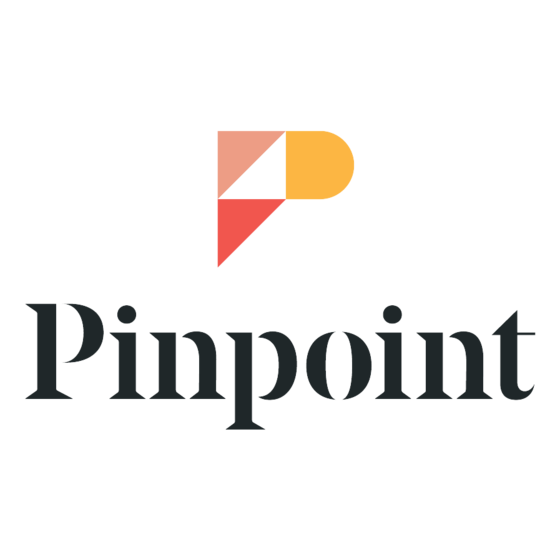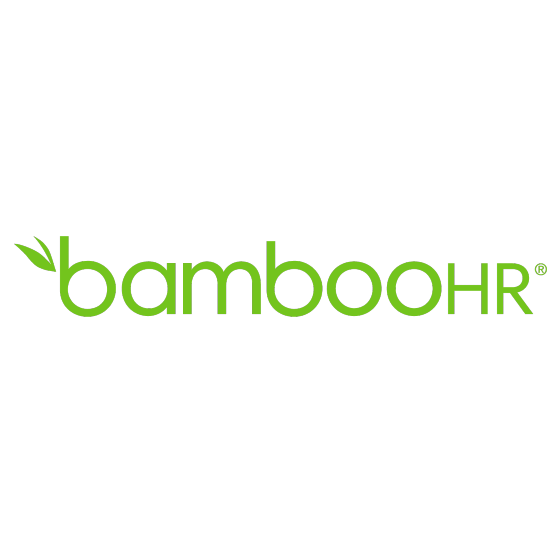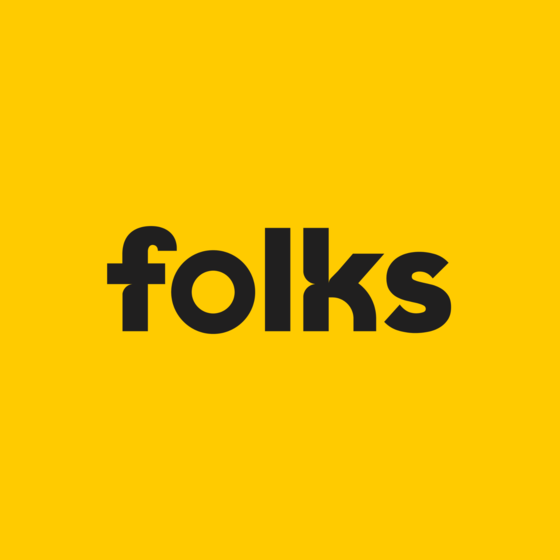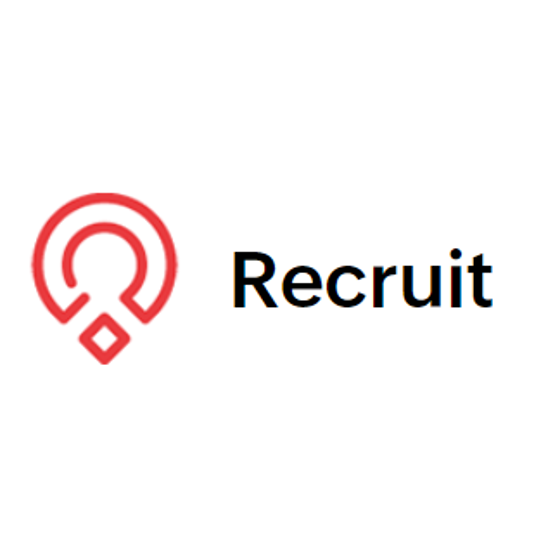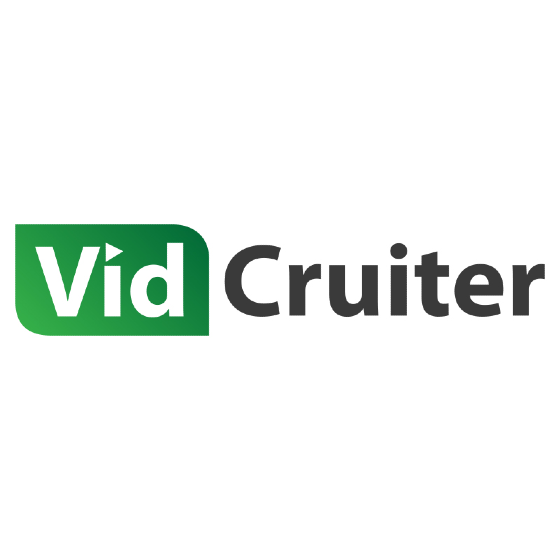Recruiting/recruitment software comes in many different flavors and, like you’d pay more for a gallon tub of Ben & Jerry’s (yes it comes in gallon tubs!) than you would a petite but yummy Haagen Dazs mini pack, there are options to justify all sizes and pricing options available to suit all needs.
So, grab yourself a couple of scoops and use this guide to help you understand recruiting software pricing in 2025. We’ll cover pricing models, factors that impact pricing, hidden fees to look out for, and more!
How Much Does Recruiting Software Cost?
The cost of recruiting software varies widely depending on the features and scale required. While some offer native apps, most are cloud-based recruiting software solutions.
Small business
For small businesses that only require limited functionality and a couple of users, recruitment software typically costs between $15 to $75 per user per month, or entry-level plans can start around $200-$300 per month.
Many vendors offer small business recruiting software with scalable pricing, allowing businesses to add features as they grow. Free options with limited features are also available, providing basic functionalities for small teams.
Small businesses will sometimes also take advantage of open source HR software, which tends to offer a free community edition. But, in exchange, you must implement and maintain the system yourself without a customer service team on-call.
Medium business
For medium-sized businesses, recruitment software costs generally range from $100 to $200 per user per month or $300 to $600 per month.
Costs vary based on the number of users and capabilities such as AI-driven candidate screening, advanced analytics, and custom integration with other HR software.
Enterprise business
For enterprise businesses, recruitment software can cost from $200 - $1,000+ per user per month or one to several thousand USD per month. These solutions often include advanced features like AI-driven analytics, extensive integrations, and comprehensive support.
Pricing models can vary significantly, often based on the number of users, specific features, and the level of customization required.
Enterprises typically benefit from scalable solutions that can handle high volumes of candidates and complex hiring workflows, with some vendors offering tailored quotes based on the organization's specific needs.
Recruiting Software Price Comparison
| Tool | Best For | Trial Info | Price | ||
|---|---|---|---|---|---|
| 1 | Best for in-house talent acquisition and HR teams | Free demo available | Pricing upon request | Website | |
| 2 | Best for recruiting tools within a full HRIS suite | 7-day free trial | From $6.19/user/month (billed annually) | Website | |
| 3 | Best for large-volume candidate sourcing | Free demo available | Pricing upon request | Website | |
| 4 | Best for LinkedIn sourcing integration | Free demo available | Pricing upon request | Website | |
| 5 | Best for sourcing qualified passive candidates using AI | 15-day free trial + free demo | From $169/month, with up to 20 seats | Website | |
| 6 | Best ATS & CRM for staffing and recruiting firms | Free demo available | Pricing upon request | Website | |
| 7 | Best recruitment software for staffing agencies | 15-day free trial + free plan available | From $25/user/month (billed annually) | Website | |
| 8 | Best software for scaling referrals | Free demo available | Pricing upon request | Website | |
| 9 | Best for multi-tiered video interviewing | Free demo available | Price upon request | Website | |
| 10 | Best for flexible payment options | Free demo available | From $6.40/user | Website |
Recruiting Software Pricing Models
Recruiting software vendors price their products using a variety of pricing models depending on the type of recruitment software and the breadth of features. Here’s a breakdown of the most common pricing models, including their advantages and disadvantages.
Per-user pricing
How it works: The price per-user pricing model charges businesses based on the number of users accessing the software. Each user, typically an employee or recruiter, is assigned a license or subscription, and the cost increases with each additional user.
Advantages:
- Scalability: Easy to add or remove users as business needs change.
- Cost control: Predictable costs based on the number of users.
- Flexibility: Suitable for businesses of all sizes, allowing for gradual scaling.
Disadvantages:
- Potential for high costs: Can become expensive for larger teams.
- Complexity: Managing user licenses and tracking usage can be cumbersome.
- Limited features: Entry-level plans might lack advanced features, requiring additional purchases.
Typical price ranges
Small businesses:
- Cost: $15 to $75 per user per month.
- Features: Basic functionalities, job posting, resume keywords scanner, and candidate tracking.
Medium businesses:
- Cost: $100 to $200 per user per month.
- Features: More advanced capabilities, including analytics, integrations, and automated workflows.
Large businesses/enterprises:
- Cost: $200 - $1,000+ per user per month.
- Features: Comprehensive solutions with AI-driven analytics, extensive integrations, advanced reporting, and customizations.
Summary: The price-per-user model allows businesses to align their costs with their usage, ensuring they only pay for the resources they need. However, careful management is required to prevent costs from escalating as the team grows.
Flat-rate pricing
How it works: The flat-rate pricing model charges a fixed monthly or annual fee regardless of the number of users. This fee covers all users and typically includes a set package of features.
Advantages:
- Predictability: Easy budgeting with consistent, predictable costs.
- Simplified management: No need to track individual user licenses.
- Value for larger teams: More cost-effective as the number of users increases.
Disadvantages:
- Higher initial cost: Higher upfront cost compared to per-user pricing for smaller teams.
- Potential overpayment: Paying for more capacity than needed if the number of users is low.
Typical price ranges
Small businesses:
- Cost: $200 to $500 per month.
- Features: Basic functionalities, including job posting, candidate tracking, and simple reporting.
Medium businesses:
- Cost: $600 to $1,200 per month.
- Features: Advanced capabilities, such as analytics, integrations, and automated workflows.
Large businesses/enterprises:
- Cost: $1,500 to several thousand dollars per month.
- Features: Comprehensive solutions with AI-driven analytics, extensive integrations, advanced reporting, and customizations.
Summary: Flat-rate pricing is advantageous for businesses that require a stable, predictable budget and can fully utilize the software's features across a larger team. However, it may not be cost-effective for smaller teams or those with fluctuating user numbers.
Tiered pricing
How it works: The tiered pricing model offers multiple pricing plans with varying levels of features and services. Businesses choose a tier based on their needs and budget, with higher tiers providing more advanced features.
Advantages:
- Flexibility: Options to choose the most suitable plan.
- Scalability: Easy to upgrade or downgrade based on changing needs.
- Customization: Ability to select features that match business requirements.
Disadvantages:
- Complexity: Can be confusing to navigate and choose the best plan.
- Potential for overpayment: Risk of paying for features that may not be fully utilized.
Typical price ranges
Small businesses:
- Cost: $50 to $200 per month.
- Features: Basic tier includes job posting, candidate tracking, and simple reporting.
Medium businesses:
- Cost: $300 to $800 per month.
- Features: Mid-tier includes advanced analytics, integrations, and some automation.
Large businesses/enterprises:
- Cost: $1,000 to several thousand dollars per month.
- Features: Top-tier includes AI-driven analytics, extensive integrations, comprehensive reporting, and full customization.
Summary: Tiered pricing provides flexibility and scalability, allowing businesses to tailor their investment to their specific needs. However, it requires careful evaluation to avoid paying for unnecessary features.
Price per-hire model
How it works: The price per-hire pricing model charges based on the number of successful hires made using the software. Businesses pay a fee each time a candidate is hired.
Advantages:
- Cost efficiency: Pay only when you successfully hire, aligning costs with results.
- Scalability: Suitable for varying hiring volumes, and adjusting costs based on actual usage.
- Performance-based: Encourages software providers to focus on delivering high-quality hires.
Disadvantages:
- Unpredictable costs: Expenses can vary greatly depending on hiring needs.
- Potentially high costs: Frequent hiring can lead to significant expenses.
Typical price ranges
Small businesses:
- Cost: $500 to $1,500 per hire, depending on the complexity and role level.
- Features: Basic ATS functionality, limited integrations.
Medium businesses:
- Cost: $1,500 to $3,000 per hire.
- Features: Advanced features, including better reporting, integrations, and support.
Large businesses/enterprises:
- Cost: $3,000 to $10,000+ per hire.
- Features: Comprehensive solutions with extensive customization, integrations, and premium support options.
Summary: This model aligns costs directly with hiring success but can lead to high costs if hiring frequently or for high-level positions. In reality, it’s quite a rare model for software vendors to use and is more commonly used by recruitment agencies.
Custom pricing
How it works: The custom pricing model offers tailored solutions and pricing based on the specific needs and scale of the business. This model involves detailed consultations with the vendor to determine the exact requirements and create a personalized pricing plan.
Advantages:
- Customization: Highly tailored to meet the specific needs and workflows of the business.
- Scalability: Can grow and adapt as the business evolves.
- Comprehensive solutions: Often include advanced features and dedicated support.
Disadvantages:
- Complexity: Requires time and effort to talk to a salesperson.
- Lack of transparency: Initial costs may be unclear without detailed consultation.
Typical Price Ranges
Small businesses:
- Cost: $500 to $1,000 per month.
- Features: Custom features that may include advanced analytics, specific integrations, and tailored support.
Medium businesses:
- Cost: $1,000 to $5,000 per month.
- Features: More advanced customization, including AI tools, comprehensive integrations, and extensive reporting capabilities.
Large businesses/enterprises:
- Cost: $5,000 to tens of thousands of dollars per month.
- Features: Full-scale solutions with complete customization, dedicated account managers, extensive support, and all advanced features.
Summary: Custom pricing provides maximum flexibility and tailored solutions to fit unique business requirements but requires a thorough consultation process to determine the appropriate cost and features.
Freemium Models
How it works: The freemium pricing model offers a basic version of the recruiting software for free, with the option to pay for additional features and capabilities. This model allows businesses to start using the software with no initial cost and upgrade as their needs grow.
Advantages:
- Low entry cost: No initial investment, making it accessible for small businesses and startups.
- Trial opportunity: Allows businesses to test the software before committing to a paid plan.
- Scalability: Businesses can upgrade to paid plans as their needs expand.
Disadvantages:
- Limited features: Free versions often have restricted functionality, user limits, and limited support.
- Data Restrictions: Free plans may have limited data storage and job posting capacities.
Examples of popular freemium recruiting tools
- Zoho Recruit: Offers a free plan with basic functionalities. Paid plans include advanced analytics, integrations, and automation.
- SmartRecruiters: Provides job postings and collaborative hiring for free. Premium plans offer advanced reporting and recruiting CRM features.
- Breezy HR: Free plan includes job postings and resume parsing. Paid plans add advanced scheduling, integrations, and automation.
- Workable: Basic free plan with job postings and candidate management. Paid plans offer advanced sourcing, AI-powered recommendations, and extensive reporting.
Potential Additional Costs of Recruiting Software
In addition to the price per user or package, there may be extra costs to look out for:
Implementation and onboarding
Some vendors charge implementation fees to cover data migration, training, and system configuration. How much these are will depend on the complexity of your needs and it’s definitely something to ask about in the research phase.
As an example, PC Recruiter’s pricing starts at around $85 per user, per month for a basic two-year contract, plus a setup fee to cover training and implementation.
Customization
Adapting the software to your workflow or adding extra features might incur additional costs. For example, someone might charge $800 to build a custom dashboard.
Integrations
Some vendors charge for integrating with other HR systems, job boards, or third-party applications (especially if these have to be custom-built).
Costs can range from anywhere between $30 to $100 extra a month, so be sure to ask about this and read the fine print.
Support and maintenance
Many vendors offer great support as standard, however, some might add extra costs for priority support such as 24/7 or live chat.
Data storage
If your organization generates a significant amount of data then you might have to pay for additional storage.
For example, the applicant tracking system Crelate offers up to 15GB storage with their professional plan but offers the option to upgrade to 25GB.
Third-party services
Some vendors offer third-party services like background checks, job board postings, and candidate assessments.
Data migration costs
Depending on the complexity of the data migration, some vendors might offer their expertise as an additional service.
Training, implementation, and user adoption
Some vendors charge additional training costs, especially if your hiring team requires extensive upskilling to use the new software.
Overages
Some software vendors charge additional fees for overages e.g. exceeding the number of users, job postings, or assessment tests included in your pricing plan.
Maximizing ROI On Recruiting Software
Ultimately, we invest in new recruiting software to save time and money in the long run. Use this process to help you select the right solution for you and maximize your return on investment.
1. Define your needs
- Identify challenges: Outline specific pain points like lengthy and disorganized hiring processes, lack of quality candidates, or inadequate data. You’ll use these challenges to measure the effectiveness of the tool post-implementation.
- Desired features: List essential features such as applicant tracking, customizable hiring dashboards, recruiting automation tools, and integration capabilities.
- Future scalability: Consider future growth, ensuring the software can scale to help you meet your business objectives
2. Research and shortlist
- Vendor research: Explore various vendors and compare features, customer reviews, and case studies. Luckily, the web is full of informative websites (like this one) comparing the best recruitment software tools against each other. You can also join HR communities or tap into your network for recommendations.
- Shortlist criteria: Focus on solutions that align closely with your needs and budget constraints.
3. Request demos and trials
- Request for information: Send each vendor a request for information (RFI) so you can compare your options point for point.
- Request for proposal: If you want to be really thorough, send each of your shortlisted vendors a request for proposal (RFP). This will include key information about your company, your specific needs, a vendor questionnaire, and any specific proposal submission rules they should follow, such as submission deadlines.
- Schedule meetings and demos: Schedule a meeting with their sales rep and go through your questions. Look to assess user interface, ease of use, and feature effectiveness.
- Review: System compatibility, API and data sharing, and training and support options.
Tips for negotiating with vendors
When it comes to negotiating with vendors, it pays to do your homework. Here are some tips to help you go into the negotiation on the front foot:
- Market research: Understand general market rates, competitor vendor offerings, and your own needs.
- Bundle and volume discounts: Look to leverage potential discounts for purchasing multiple products or higher volumes.
- Request free trials or demos: Ensure the product meets your needs before committing.
- Leverage competition: Use competitive offers as a bargaining tool.
- Seek value-added services: Always negotiate for additional support, training, or features.
Remember, the recruiting software market is fiercely competitive so you’re in the driving seat. Also, to help compare vendors, use this handy evaluation template.
4. Make the business case
With all the above data gathered, it's time to put together your business case and get the green light.
This doesn't have to be a 10-page document, it can be as simple as a one-page memo (because who has time to read 10 pages anyway).
Decision-makers are looking for answers to the following questions:
- How much does it cost?
- What pain points will the software solve?
- If we didn’t invest in the software, then what?
- How long will it take to implement?
- Why do we need to invest now?
- What is the ROI of implementing HR software?
Example ROI calculation for a new ATS
ROI Formula: (TotalSavings+RevenueImpact−TotalCosts)/TotalCosts(Total Savings + Revenue Impact - Total Costs) / Total Costs(TotalSavings+RevenueImpact−TotalCosts)/TotalCosts x 100
Example Calculation:
- Costs:
- Initial setup and training: $5,000
- Annual subscription: $10,000
- Total Costs: $15,000
- Savings:
- Reduced time-to-hire: $8,000 (time savings)
- Decreased cost-per-hire: $5,000 (reduced recruitment costs)
- Total Savings: $13,000
- Revenue Impact:
- Faster onboarding of employees leads to $10,000 in additional revenue.
- ROI Calculation:
- (13,000+10,000−15,000)/15,000(13,000 + 10,000 - 15,000) / 15,000(13,000+10,000−15,000)/15,000 x 100 = 53.3%
This example shows a 53.3% ROI, indicating a positive return on investment from using the ATS.
5. Measure effectiveness
Remember during step one you listed out your pain points like lengthy hiring processes? Now it’s time to track how the new tool is alleviating these issues.
Some common recruitment metrics that your new tool will likely move the needle (sorry) on:
- Time to Fill: The number of days it takes to fill a job vacancy from the day the position is posted until an offer is accepted.
- Time to Hire: The number of days from the first contact with a candidate to the candidate accepting the job offer.
- Number of applicants: The total number of candidates who apply for a job opening.
- Quality of candidates: Can be measured by looking at what % make it through to the first round interview or the offer stage.
- Recruitment funnel speed: The speed at which candidates move through the recruitment funnel stages, from application to hiring.
- Candidate net promoter score (CNPS): A metric that measures candidates' satisfaction and the likelihood of recommending your recruitment process to others.
- Diversity of pipeline: The variety of candidates in the recruitment pipeline, is measured by factors like gender, ethnicity, and background.
- Average cost per hire: The total recruiting costs are divided by the number of hires, representing the average expense of filling a position.
Recruitment Software Pricing Vendor Demo Questions
Here are some questions to ask during sales calls and demos to help ensure you cover all the bases and make an informed decision:
- Features: How can your software help us overcome X issues or challenges?
- Total costs: Can you break down the cost structure, including any additional fees for features, integrations, or extra support?
- Customization: Can the software be customized to fit our specific recruitment workflows and needs? Are there any costs associated with this?
- Integrations: Can the tool integrate with other tools in our HR tech stack? Are there any additional costs for this?
- Live demo: Can we see a live demonstration of the product and features? (If you can't see it work in a live setting it’s likely it won't deliver as promised).
- Implementation: What is the typical implementation timeline and what are the key milestones? What support is offered here and who supplies it?
- Training and resources: What training resources and support options are available for onboarding our team and using the software effectively?
- Partnerships: What partnerships do you have with other vendors and third-party services? What are the costs involved with these?
- Discounts: Do you offer discounts for early-stage startups, non-profits, or educational institutions?
- Contract length and renewal: What is the duration of the contract, and what are the terms for renewal or cancellation?
- Pricing guarantee: Do you offer price lock-in guarantees to protect against unexpected price increases during the contract term?
- Product roadmap: What is your roadmap for future features and updates, and how often is the software updated (take this with a pinch of salt though)?
- References: ask for them early and often.
What’s Next:
If you're in the process of researching recruiting software pricing, connect with a SoftwareSelect advisor for free recommendations.
You fill out a form and have a quick chat where they get into the specifics of your needs. Then you'll get a shortlist of software to review. They'll even support you through the entire buying process, including price negotiations.



